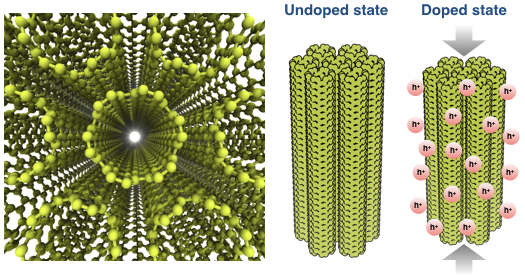Artificial Muscles

An artificial muscle is a novel actuator based on a variety of polymers or composites that change their shape when excited electrically. A composite of carbon nanotubes is known to be one of the strongest and stiffest materials, and it can reversibly contract and expand in volume under an applied voltage, similar to the natural muscle. Almost two decades ago, Baughman group built an ultra-strong artificial muscle from carbon nanotube bundles with electrochemical charging, in which the artificial muscle could be about 100 times stronger than the natural muscle in terms of force generated per unit area. We now try to understand the physical basis of actuator materials by the density functional theory (DFT) and also try to design new actuator materials.
Selected Publications
- N. T. Hung, A. R. T. Nugraha and R. Saito, Two-dimensional MoS2 electrochemical actuator, J. Phys. D: Appl. Phys. 51, 075306 (2018).
- N. T. Hung, A. R. T. Nugraha and R. Saito, High-performance three-dimensional carbon Archimedean lattices electromechanical actuators, Carbon 125, 472-479 (2017).
- N. T. Hung, A. R. T. Nugraha and R. Saito, Charge-induced electrochemical actuation of armchair carbon nanotube bundles, Carbon 118, 278-284 (2017).